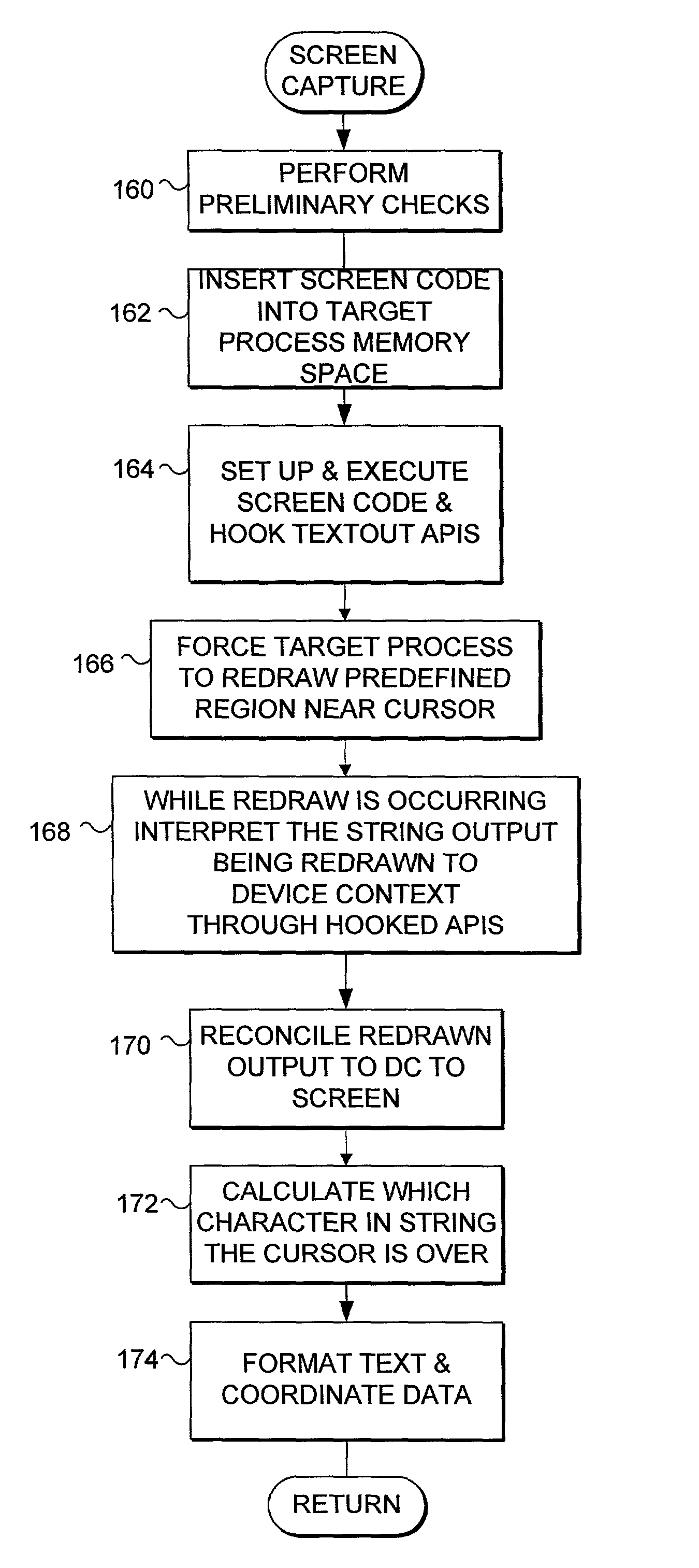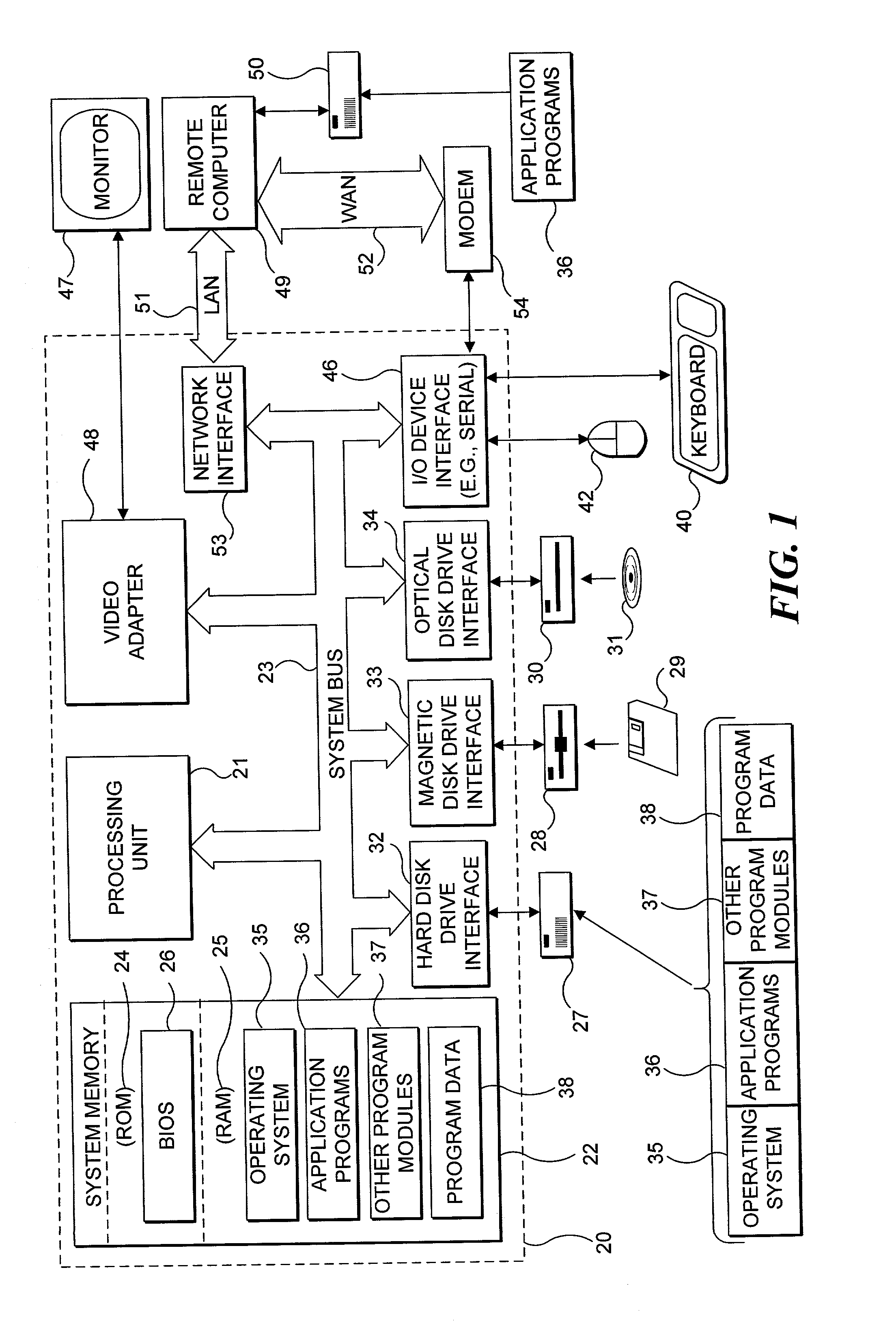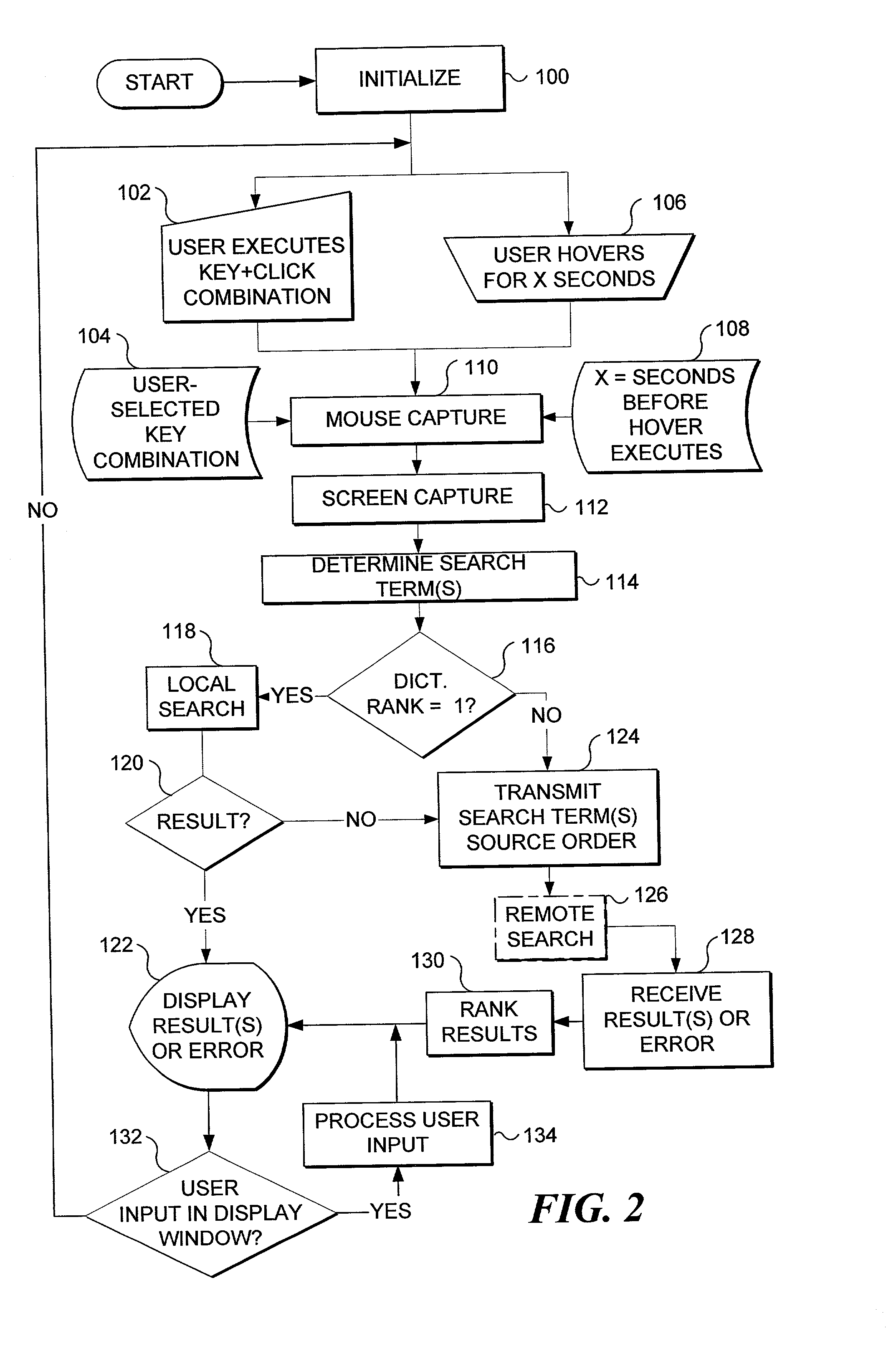Electronic content search and delivery based on cursor location
a technology of electronic content and cursor location, applied in the direction of digital data processing details, instruments, digital values comparison, etc., can solve the problems of not being readily apparent to the user how to activate the software, the existence of this software is somewhat difficult for a user to determine, and its use is also difficult to discover. , to achieve the effect of fast and reliable word recognition
- Summary
- Abstract
- Description
- Claims
- Application Information
AI Technical Summary
Benefits of technology
Problems solved by technology
Method used
Image
Examples
Embodiment Construction
Exemplary Operating Environment
[0054]FIG. 1 and the following discussion are intended to provide a brief, general description of a suitable computing environment in which the present invention may be implemented. The invention may be practiced on a single computing device, but will generally be described in regard to a client computing device and a server or other remote computing device connected by a communication network, both of which will typically include the functional components shown in FIG. 1. Although not required, the present invention will be described in the general context of computer executable instructions, such as program modules that are executed by a PC. Generally, program modules include application programs, routines, objects, components, functions, data structures, etc. that perform particular tasks or implement particular abstract data types. Also, those skilled in the art will appreciate that this invention may be practiced with other computer system configu...
PUM
 Login to View More
Login to View More Abstract
Description
Claims
Application Information
 Login to View More
Login to View More - R&D
- Intellectual Property
- Life Sciences
- Materials
- Tech Scout
- Unparalleled Data Quality
- Higher Quality Content
- 60% Fewer Hallucinations
Browse by: Latest US Patents, China's latest patents, Technical Efficacy Thesaurus, Application Domain, Technology Topic, Popular Technical Reports.
© 2025 PatSnap. All rights reserved.Legal|Privacy policy|Modern Slavery Act Transparency Statement|Sitemap|About US| Contact US: help@patsnap.com



